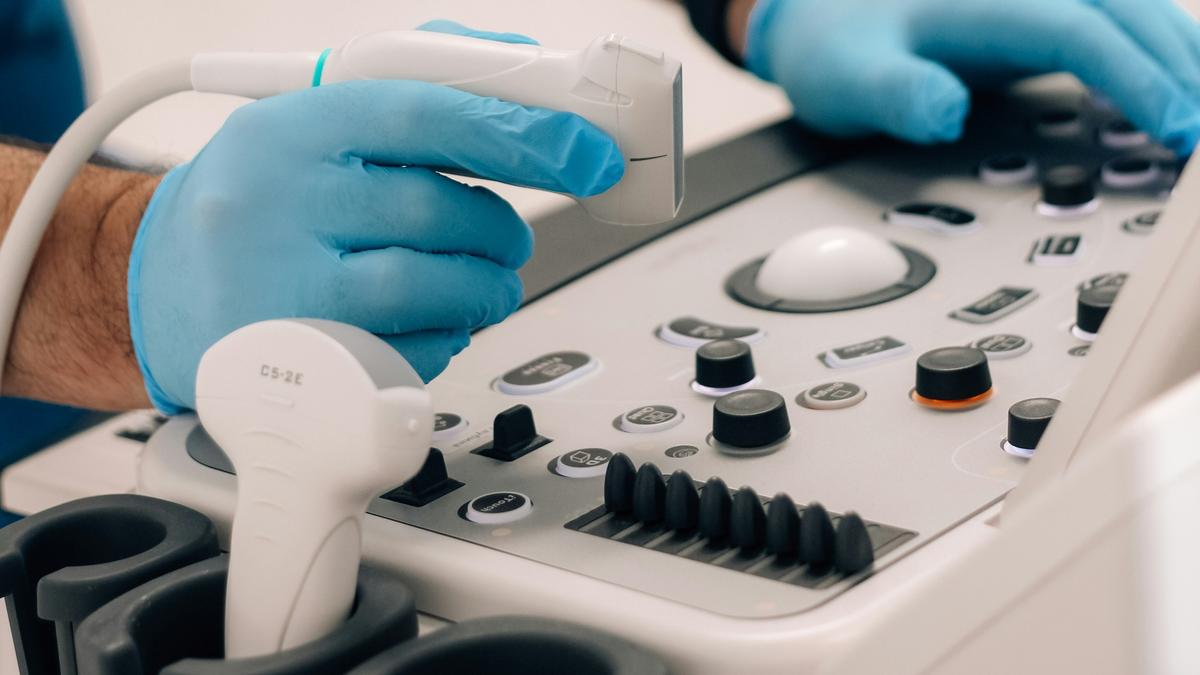Introduction to Innovative Cancer Detection Technique

- 25 Oct 2024
In News:
- Scientists have developed an ultrasound-based technique for detecting cancer, aiming to replace traditional biopsies, which are invasive and painful.
- Promising Alternative: The method uses high-energy ultrasound to release biomarkers (RNA, DNA, and proteins) from cancerous tissue into the bloodstream, allowing for early cancer detection with minimal discomfort.
- Presented at Acoustical Society Conference: The technique was discussed at the joint meeting of the Acoustical Society of America and Canadian Acoustical Association in May 2024.
Traditional Cancer Detection vs. New Ultrasound Approach
- Current Gold Standard - Biopsy: Traditionally, cancer is diagnosed using biopsies, where a tissue sample is extracted using a needle from suspected cancerous areas. Although effective, biopsies are invasive, painful, and carry some risks.
- Ultrasound as a Non-Invasive Alternative: The new method involves using high-frequency ultrasound waves to break off cancerous tissue into droplets, which are then released into the bloodstream. The biomarkers in the droplets can be analyzed for cancerous mutations.
- Enhanced Sensitivity: This ultrasound-based technique increases the levels of genetic and vesicle biomarkers in blood samples by over 100 times, enabling the detection of cancers and specific mutations that are otherwise undetectable in blood.
Key Findings of the Research
- Single Cancer Cell Detection: The technique allows for the detection of a single cancer cell in blood samples. It works by passing ultrasound waves through isolated blood samples, which break apart circulating cancer cells, releasing biomarkers into the blood.
- Cost-Effective: Traditional methods for detecting circulating cancer cells are costly (e.g., the ‘CellSearch’ test costs $10,000). In contrast, this ultrasound method can detect cancer with a much lower cost, around $100 (?8,400).
- Potential for Early Diagnosis: The research shows promise for detecting cancer at an early stage, even before symptoms appear, using blood samples.
Challenges and Next Steps
- Need for Large-Scale Clinical Trials: While the technique shows potential, large cohort studies involving diverse patient groups across different geographies and ethnicities are needed to validate the approach.
- Long-Term Study for Effectiveness: Further research is required to ensure the accuracy and reliability of the technique across various cancer types and to determine the ideal biomarker thresholds for early detection.
- Regulatory Approval and Commercialization: If the clinical trials yield positive results, the method could be commercially available in approximately five years, following regulatory approval.
Understanding Cancer and Its Types
- Cancer Definition: Cancer refers to the uncontrolled growth of abnormal cells that can form tumors and spread to other parts of the body.
- Types of Cancer:
- Carcinoma: Cancer originating in epithelial cells (e.g., breast, lung, prostate cancer).
- Sarcoma: Affects connective tissues like bones and muscles.
- Leukemia: Affects blood-forming tissues, leading to abnormal white blood cell production.
- Lymphoma: Begins in immune cells, including Hodgkin and non-Hodgkin lymphoma.
- Melanoma: Cancer of pigment-producing skin cells.
- Key Differences Between Normal and Cancer Cells:
- Cancer cells grow uncontrollably and evade immune detection.
- Cancerous cells accumulate chromosomal abnormalities, unlike normal cells, which follow regulated growth patterns.
